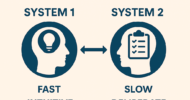At the heart of healthcare operations are their processes – processes that must run correctly all the time to avoid unnecessary risk to patients’ lives and health.
Once the healthcare industry acknowledged the fact that we all make mistakes – even physicians – it began to look into methodologies used by other industries to structure more “perfect” organizations.
Two such process improvement methodologies — LEAN and Six Sigma — are now being applied across our industry to continually examine the functioning of health systems, hospitals, large provider groups, health information technology organizations, and health product manufacturing organizations.
I admit that I’ve always found these terms a bit confusing until I came across a straightforward, easy-to-understand chart comparing and contrasting these two concepts.
LEAN = Eliminating waste
In healthcare, things that can be classified as “waste” include excessive motion (e.g., incorrect layout of emergency department resulting in inefficient work flow), excessive wait times (e.g., waiting for approval or responses, searching for information), and unnecessary processing (e.g., unnecessary steps in the work flow).
By eliminating waste, the LEAN methodology seeks to add value to any procedure or activity that the patient receives.
In a healthcare context, LEAN is a patient-centric methodology focused on identifying opportunities for improvement by eliminating things that do not add value (i.e., wasteful activities) thereby creating value. For example, the physician and patients alike benefit from an improved turnaround time for results of critical laboratory and diagnostic tests.
SIX SIGMA = Reducing variation
While the normal variation found within a given process is considered truly random, special-cause variation emanating from sentinel or unusual events that are outside of everyday operations should be sought out, addressed, and prevented.
Six Sigma reduces variation by means of the DMAIIC Cycle (Define > Measure > Analyze > Improve/Implement > Control) and associated tools for analysis, such as histograms, fishbone diagrams, scatter graphs, and flow charts.
What it means for docs
So, what does this have to do with typical physicians and patients?
With the emergence of Accountable Care Organizations and the Patient-Centered Medical Home concept, all physicians are being challenged to assess their processes for providing healthcare (clinical, business, and communication) to make them both more valuable to patients and most effective for their clinical practices and bottom lines.
Not surprisingly, LEAN and Six Sigma are getting some traction in the medical literature.
LEAN Six Sigma (LSS) refers to the merging of these two methodologies to address the business side by enabling a physician or physician group to assess how the practice is functioning.
LSS facilitates a review of the practice’s processes and systems to identify improvement opportunities that ultimately help the physician, staff, and patients realize their common goal – better healthcare at a lower cost.
Two simple, handy LSS tools that are commonly used are checklists (or “cheat sheets”) and flow charts (also referred to as the Value Stream Maps or Process Maps).
Checklists can be used for any situation in which numerous tasks must be completed in a relatively short time – e.g., a follow-up visit for a patient with diabetes – and many electronic health records include versions of such tools.
Flow charts help to break down office processes into basic, sequential steps and are helpful in identifying opportunities to add value for both the physician (greater efficiency in medical charting, patient scheduling, routine task distribution) and the patient (less waiting time to schedule a visit, shorter waiting time during the visit).
Many of us cringe at the prospect of adding yet another thing to our growing “to-do” lists, but the time we spend understanding and improving upon how we do things in our practices will save us valuable time, improve the overall quality of the care we provide, and – importantly – make our patients very happy!
David B. Nash is Founding Dean of the Jefferson School of Population Health at Thomas Jefferson University and blogs at Nash on Health Policy.























![Rethinking medical education for a technology-driven era in health care [PODCAST]](https://kevinmd.com/wp-content/uploads/The-Podcast-by-KevinMD-WideScreen-3000-px-4-190x100.jpg)

